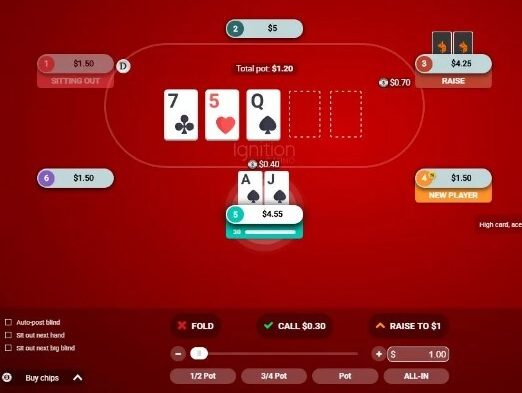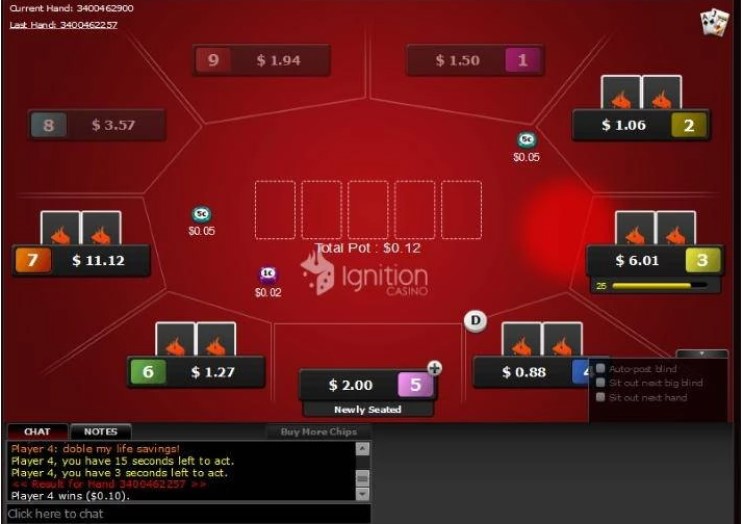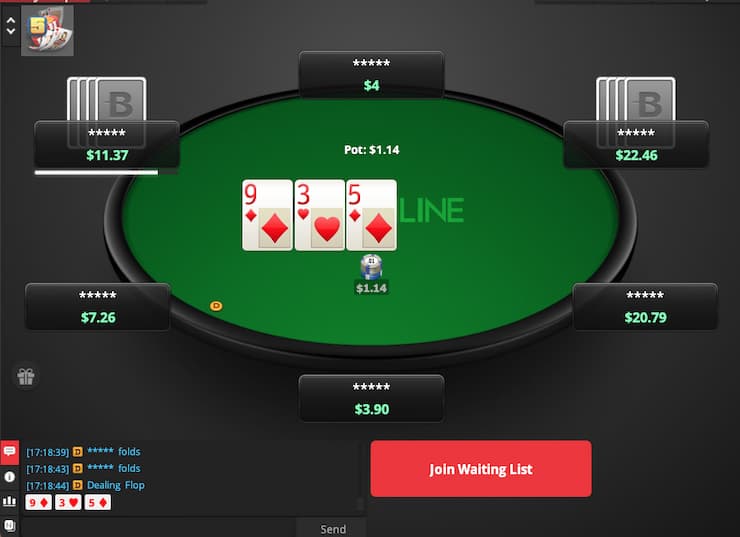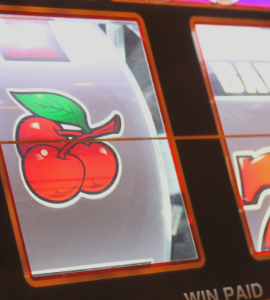There are different types of poker for every preference. Texas Hold’em is the king of poker variants, but it’s not the only game in town. In fact, for some players, there are better types of poker if you enjoy big bets, bluffing, and battling with opponents in different scenarios.
Whether you enjoy the mathematical challenge of Limit games or the all-out aggression of No Limit, you’ll find something to suit you at our recommended poker sites. Here are the types of poker you can play online for free and in cardrooms across the US.
5 Popular Poker Game Types
Before we discuss poker variations, we should outline the overarching structures within which games are played. The fundamental rules of common poker games remain the same, regardless of the format.
However, when you play online poker the format does dictate how bets are made, when play starts and stops, and the amount of money on the line. Below are the formats used for different kinds of poker.
Tournaments
Poker tournaments are scheduled events. They have set start times, and play continues until one player holds all the chips in play. The main difference between tournaments and cash games is that the chips don’t have any value. Instead, you pay an entrance fee to play. This gets you a stack of chips that only have value in the tournament you are playing.
Your tournament goal is to build your stack by taking chips from other players. Blinds increase at set intervals to ensure tournaments finish promptly and the players who survive long enough win some money.
Surviving long enough to win a prize is known as “making the money.” Usually, between 10% and 20% of the starting field make it into the money. The biggest payouts are reserved for the winner and those who make the top 5. All types of poker can be played using a tournament format.
(Source: WPT/Nica Stylianos)
Cash Games
Cash games don’t have start or end times. A cash game only stops if all poker players leave the table. Unlike tournaments, chips in a cash game have a value. For example, if someone sits down with $100 worth of poker chips, their stack is worth $100.
Like other types of poker games, the aim is to win chips from your opponent. However, your cash game strategy differs from a tournament because the blinds don’t increase.
For example, when tournaments have been running for a long time, the blinds represent a significant percentage of a player’s stack. This forces them to play looser (i.e., more hands) because the blinds will decimate their stack if they wait too long.
This doesn’t happen in cash games because the blinds are static. Stacks are a lot deeper, allowing players to play hands across multiple streets (flop, turn, and river) rather than make big pre-flop moves.
All poker variations can be played using the cash game format, but some are more popular than others. The best poker games for cash players are No Limit Hold’em, Pot Limit Omaha, and Limit 7-Card Stud.
Sit & Gos
Sit & Gos (SNGs) are mini-tournaments. They don’t have set start times. Instead, a game begins once the table is full. After this, play continues until someone has all the chips. The top performers win a share of the prizepool, with the winner getting the most money.
Freerolls
Freerolls are tournaments that carry no entry fee. The beauty of freerolls is that you can win cash prizes donated by the poker room. There is zero risk, but you might have to play your way through thousands of players to get to the money places.
The average skill level in freerolls is low, so they’re a good way to make money for nothing. Our top-rated poker sites give new customers entry to freerolls. You can also get entry to exclusive freerolls by earning reward points.
Satellites
Satellites are also known as “qualifiers”. Winning a satellite earns you entry into a more expensive tournament. This may be a larger satellite, an online championship final, or even a major live event.
Typically, satellites guarantee a certain number of seats or travel packages. Satellites play down to a few remaining players to determine who bags themselves a seat.
2003 World Champion Chris Moneymaker won his way into the $10,000 WSOP Main Event via a $39 satellite. He went on to win the tournament for $1.5 million.
CoinPoker US 150% Deposit Bonus Up To $2,000 150% Deposit Bonus Up To $2,000
CoinPoker US
Play Now
5 Best Poker Variants
The formats we’ve just described are frameworks for various types of poker. While it’s fair to say that some poker variants are better suited to cash games and other tournaments, these are more preferential restrictions than logistical ones.
Therefore, once you’ve tried the different types of poker listed below and found a few variants you like, you’ll be able to play them in any format.
Basic Poker Hand Rankings
These are the most common hand rankings in poker. They are used for most poker games, including Hold’em and Omaha.
Royal Flush
10-J-Q-K-A of same suit
e.g. 10♥️ J♥️ Q♥️ K♥️ A♥️
Straight Flush
Five consecutive suited cards
e.g. 2♠️ 3♠️ 4♠️ 5♠️ 6♠️
Four of a Kind
Four cards of same value
e.g. 4♠️ 4♥️ 4♣️ 4♦️ K♥️
Full House
Three of a kind plus a pair
e.g. A♠️ A♣️ A♥️ 2♦️ 2♥️
Flush
Five non-consecutive, suited cards
e.g. 2♥️ 6♥️ 8♥️ 10♥️ K♥️
Straight
Any five non-suited, consecutive cards
e.g. 2♥️ 3♣️ 4♠️ 5♣️ 6♦️
Three of a Kind
Three cards of same value plus any two cards
e.g. 4♠️ 4♣️ 4♦️ K♥️ 2♥️
Two Pair
Two pairs plus any card
e.g. 4♥️ 4♠️ J♠️ J♥️ A♥️
One Pair
One pair plus any three non-matching cards
e.g. 6♥️ 6♠️ 7♥️ 9♠️ Q♥️
High Card
Any five non-matching cards
e.g. A♠️ 3♥️ 5♣️ 8♥️ 9♣️
Texas Hold’em
Texas Hold’em is the most popular variant. It’s used for the biggest poker tournaments, including the WSOP Main Event and the WPT World Championship.
A round starts with one player posting the big blind and another the small blind (which is 50% of the big blind’s value). For example, a $1/$2 game means the big blind is $2, and the small blind is $1.
The player immediately to the right of the small blind is known as the “button” because they have the dealer button. Having the button is advantageous in all popular poker games because you get to act last pre-flop. You can learn more about this in our poker strategy guide.
Once the blinds have been posted, each player receives two hole cards. For context, hole cards are cards only the holder can see. Once every player has their hole cards, the action starts with the player immediately to the left of the big blind. This position is known as “Under the Gun”.
A betting round follows, and if at least two players remain active, a flop of three community cards is dealt. All players may use any or all of the community cards.
Another betting round takes place on the flop, and if at least two players remain active, a fourth community card is dealt. That card is called the turn. Finally, if two players get through another betting round, a fifth card called the “river” is dealt.
One last betting round occurs, and if two or more players have called the last biggest bet, a showdown takes place. In the event of a showdown, the best five-card poker hand wins.
Omaha Hi
Omaha Hi, commonly referred to as Omaha, is almost identical to Texas Hold’em. It’s a community card game where betting takes place pre-flop and, subsequently, on the flop, turn, and river.
The fundamental difference between Omaha and Hold’em is that players receive four hole cards. Importantly, a player must use two of their hole cards.
Omaha Hi-Lo/Omaha 8
Omaha Hi-Lo is a split-pot game. Like other variants of poker with split-pot rules, there can be two winners: the person with the best high-value hand and the person with the best low-value hand.
It’s also possible for players to scoop both parts of the pot. A high-value hand follows the same rankings as common poker games such as Hold’em, i.e. a high card is the worst hand, and a royal flush is the best.
A low-value hand is defined by the same rankings as you’ll find in other lowball poker variants. That means a hand’s value is defined by its highest card. The best possible lowball hand is A-2-3-4-5 (aces are low).
Straights and flushes don’t count when you’re ranking low hands, but pairs do. Apart from the split-pot rule, Omaha Hi-Lo games play out in the same way as Omaha Hi games.
7-Card Stud/5-Card Stud
No poker games list would be complete without Stud. Typically played with seven cards but also available in five-card variants, this game doesn’t involve community cards. Instead, everyone receives their own card from which they have to make a ranked five-card hand.
To help you determine what other hands people might have, the rules of Stud dictate that some cards are dealt face up and some face down. So, in 7-Card Stud, three cards are dealt face down, and four are dealt face up.
In 5-Card Stud, meanwhile, you receive one face-down card to begin with, followed by three up-cards, and a final down-card.
Razz
Razz is a lowball variant of Stud. Based on what we’ve described already, Razz is a combination of Omaha Hi-Lo and 7-Card Stud. That means you receive seven cards, and the aim is to make the best low hand (i.e., a hand that is defined by its highest-value card).
5-Card Draw
Draw poker is one where you’re the only person who gets to see your hole cards unless there’s a showdown. A round starts with players putting in an ante. After that, everyone gets five cards dealt face down.
You then assess the value of your cards and decide whether you want to play or fold. If you play, you’ll have the opportunity to hold or exchange as many cards as you like.
Finally, if two or more players are active after the draw, a showdown takes place, and the ranked poker hand wins. Most casino poker variations, including Ultimate Texas Hold’em and Caribbean Stud, use the 5-card draw format.
H.O.R.S.E
H.O.R.S.E is a mixed game made up of five different types of poker: Hold’em, Omaha Hi-Lo, Razz, 7-Card Stud, and 7-Card Stud Eight or Better. It’s known as a mixed game because the variant changes after each orbit of the button. Many pros consider H.O.R.S.E the ultimate test of skill because you have to be proficient in the most popular poker games.
2-7 Triple Draw
2-7 Triple Draw is a 5-card game that’s similar to the lowball poker variants we’ve already described. That means the lowest-value hand wins, and, as before, the value of a hand is determined by its highest card.
However, while the overarching premise of 2-7 Triple Draw is the same as Razz and the low portion of Omaha Hi-Lo, there are some differences. Specifically, straights and flushes count against your hand. They don’t in Razz, for example. Additionally, aces are high cards. This means the best 2-7 Triple Draw hand is 2-3-4-5-7.
Short Deck Hold’em
Short Deck Hold’em, or 6+ Hold’em, is a version of Texas Hold’em where all cards lower than a 6 are removed from the deck. The action plays out the same as Hold’em, and you’ll only notice a difference when hands go to a showdown.
The hand rankings for Short Deck Hold’em invert the value of full houses and flushes, i.e. flushes are ranked higher than full houses. That’s because flushes are harder to make.
Chinese Poker
Of all the different types of poker you can play, Chinese is something of an outlier. That’s because it’s more of a side game that people play while they’re on a tournament break.
Up to four players can play Chinese Poker because everyone gets 13 cards. The aim is to arrange those 13 cards into three hands. Two hands contain five cards, and the last has three cards.
Hands must be arranged from strongest to weakest. Players get a point for each hand they win and, in general, points have a cash value. The player with the most points at the end of a game makes a profit.
Play different kinds of poker online at Bovada and earn great loyalty rewards.
Poker Betting Limits
We know that poker can be played in a variety of formats, including cash games and tournaments. We also know there are various types of poker, each of which has different ways of dealing cards and ranking hands.
The final system that governs how you play poker is the betting structure. The following structures dictate the ways you’re allowed to bet and raise in all types of poker games.
No Limit
No Limit betting, as the name suggests, has no limits on the amounts you can bet or raise. The only limits to the amount of money you can put into the pot are the minimum bet and your stack.
For example, if the blinds are $1/$2, you can’t bet anything less than the value of the big bling, i.e. $2 in this case. Similarly, if the pot is $50 and your stack is $100, you can bet anything up to $100. The most common poker games you’ll find online are No Limit Hold’em.
Limit
Limit is a betting structure that restricts the amount you can bet/raise based on the blinds. In general, you can bet or raise an amount equal to the value of the small blind during the initial betting round.
After that, you can bet or raise amounts equal to the big blind. For example, if the blinds are $1/$2 and you’re playing Limit Hold’em, bets/raises on the flop would be $2. There is often a four-bet cap in Limit games. That means no more raises are allowed after a bet followed by three raises.
Pot Limit
Pot Limit betting sits in between Limit and No Limit. The amount you can bet or raise is limited to the value of the pot. For example, if there’s $10 in the pot, you can bet anything between the minimum (i.e. the value of the big blind) and $10. Of all the different kinds of poker you can play using this betting system, Omaha is the most popular.
Online Poker vs Live Poker
You can play all types of poker online and in live cardrooms around the US. However, if you want to focus on one or the other, here are some things to consider:
Online Poker
- You get a greater selection of poker variations online
- You’ll find more low-stakes variants of poker online
- You can earn bonuses playing online
- You can play different types of poker for free online
- The human aspect of poker is lacking online
- It’s harder to get read on people
Live Poker
- All of the most popular poker games are available in live rooms
- The biggest tournaments in the world take place in live settings
- There’s a social aspect to live poker
- Games run at a slower pace in card rooms than they do online
- The minimum stakes are often higher in live casinos
More Information on Playing Poker
Play Free Online Poker
We’ve given you a basic overview of the best poker games, how they work, and the rules that govern how bets are made. The only way to know which types of poker you prefer is to try them all.
The best way to do that is to join our recommended poker sites and use their demo games. Playing for free allows you to get a feel for different kinds of poker. Then, once you’ve found a few variants you enjoy, make a deposit. You can claim a welcome bonus with a matched deposit, freeroll tokens, or cashback. You’re on the road to playing real money games for cash prizes.
Put your poker tournament skills to the test at BetOnline today.
FAQs
What are the best types of poker for winning?
What are the most popular poker games online?
Can I play many types of poker in my local cardroom?
Does the WSOP offer lots of poker variations?
Responsible Gambling
Always play poker responsibly, regardless of the variant or stakes. Only ever risk a small percentage of your bankroll in a game. Use the responsible gambling tools at our top-rated offshore poker sites to remain in control at all times. For more information, check out our responsible gambling FAQ.
Resources
- World Series of Poker
- World Poker Tour
- The best poker books
- Curacao eGaming
- How to Play Razz
- How to Play 7-Card Stud Hi-Lo
































